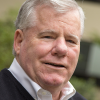adidas: where talent rules
FROM JANUARY 2015's RECRUITER MAGAZINE
Grabbing headlines over the last year for poaching a team of key designers from arch rival Nike, sports giant adidas is making recruitment sexy as well as something of a blood sport.
When the company announced in 2015 that its communications strategy moving forward would be “relentless and aggressive storytelling”, its talent acquisition (TA) team had already clearly signed onto — or perhaps even initiated — the approach. They are, they claim proudly, “relentless seekers of the world’s best talent”.
As internal ‘headhunting’ takes its place at the company alongside targeting those external ‘strategic hits’ who currently play for the other ‘sides’, adidas is further stepping up its recruitment game with real-time analytics, cutting its average candidate response time from 17 to three days and evolving job profiles that better reflect 21st century skills as well as the components of the company’s own strategic vision.
And on a sunny autumn morning, adidas is entering an advanced new phase of its bid for global domination in the talent stakes: more than two dozen new recruiters are starting at the company this particular Monday when Recruiter meets all but one of the global TA leadership team. The newbies are undergoing boot camp at the Herzo Base HQ in Herzogenaurach, near Nuremburg in Germany, and warming up to take on named and unnamed competitors for the world’s most creative talent.
“From the beginning of the year [2015] until now, we’ve gone from 14 to 52 recruiters,” explains Tom Hovington, the transplanted Yorkshire native who is adidas’ director of TA HQ functions.
Hovington is a key player on the global TA leadership team led by Steve Bonomo, vice president, global TA. Rounding out the team are Tauna Dean, global search director; Steve Fogarty, director, TA Futures; and Hanna Nordell-Shirran, director, TA EMEA.
Of the new era, Hovington says: “For the first time ever, the people strategy is part of the business strategy.”
Creating the New
In March 2015, adidas Group revealed a dramatic five-year strategic business plan centred around the theme ‘Creating the New’. (An ancillary recruitment theme ‘Calling all creators’ serves as an irresistible call to action.) Geared to bring the company’s brands adidas, Reebok, TaylorMade and now Runtastic closer to its consumers — “Brand is driving everything,” says Hovington — the plan is based on three strategic pillars: Speed (“Fast in satisfying consumer needs, fast in internal decision-making”), Cities (growing “share of mind, market and trend” in New York, Los Angeles, Shanghai, Tokyo, London and Paris) and Open Source, or collaboration, with athletes, consumers and partners.
Launching running app ‘adidas go’ with music streaming provider Spotify last May was one of the “first outcomes” of the ramped-up Open Source strategy. And the starry list of collaborative partners to date counts luminaries Rita Ora, Kanye West, Pharrell Williams and Stella McCartney among its ranks.
But to build its foundation on more than just celebrity power and relationships with other cool brands, the company had signalled its recognition of a link between ‘people’ and ‘business’ a few months before with the appointment of Karen Parkin as the company’s chief HR officer. Parkin previously ran the company’s global supply chain function, and before that had held business development, sales and customer service roles at adidas — an untraditionally business-centred career path for an HR chief.
With Parkin’s support to beef up TA activity and take it into new terrain, the senior TA team — of whom most have worked together for a number of years — knew they had to also up their own game to meet the company’s raised expectations and compete against all comers as gold medal talent scouts who played to win. The aim: to identify and recruit people demonstrating behaviours of confidence, creativity and collaboration.
An organisation planning to launch “creative farms” around the world where designers might find themselves seated next to either a Kanye or a consumer to create the next amazing piece of sporting wear could accept nothing else. Especially when “every single person at adidas is being asked how they can make a difference”, Hovington says. “Everyone has a responsibility to do this.”
“We’d always brought in great talent — but could we do that consistently?” asks TA global leader Steve Bonomo, visiting Herzo Base from his home turf of Portland, Oregon. “Now every hire you make is absolutely critical. We needed dedicated recruitment people working on everything.”
Proactive recruiting
Resolved last June with an undisclosed settlement, the much vaunted poaching episode — which led to Nike’s $10m (£6.6m) legal claim against designers Denis Dekovic, Marc Dolce and Mark Miner lured away by adidas and the designers’ subsequent counter claim against Nike — highlighted “proactive recruiting” in the highly competitive marketplace. Bonomo estimates that proactive recruitment amounts to about 25% of all talent acquisition at the company yet is still in its infancy. “But it’s probably twice the amount it was before,” he adds.
As the business continues its shift in a new world order, the way high-powered talent is recruited also must acclimatise to market conditions. Sometimes that may involve recruiting people that offer the company great potential but for whom a job might not exist at the moment. “Getting talent is becoming far more complex than it was,” acknowledges Steve Fogarty, TA’s futures specialist. “Everything’s changing, the stakes are higher.”
However, it’s not only external proactive recruiting that has caused controversy at adidas; inside jobs have also “caused conversations about talent management in the business”, Hovington says wryly.
One aspect of adidas’ increasingly forceful talent strategy, as championed by the TA team, has been to proactively look inside for bright lights to fill roles within the company, or, as Hovington puts it, “controversially — effectively internal headhunting, looking up profiles and pushing jobs”.
For several years, TA had fought unsuccessfully for more freedom to tap into its own talent pool for other roles. However, with strategic changes underway at adidas, the tide turned and the company recognised the value of encouraging internal mobility to retain and develop its own people. The alternative was not appealing. As Hovington points out: “We can’t stop Nike coming along and pushing a job to our people.”
Now, says Hovington, “we always go to our own talent first”. The approach is seen now by most at adidas as a positive means of helping the workforce develop their careers. Even the influential Works Council, which represents all employees at adidas, is now on board.
Talent Carousel
Internal mobility takes on global implications through the company’s new Talent Carousel initiative, for which current employees in sales and marketing jobs apply to experience roles in different geographic markets for two years. After two years, the participant can choose to stay in the role, return to the previous job and location or go on to another round of talent movement.
A mentor is one of the benefits for the chosen participants, who applied by providing a reference, writing a compelling cover letter and, in an unusual type of assessment, putting together a small display in a shoebox illustrating the applicant’s aspirations.
Although the first Talent Carousel round was limited to sales and marketing employees, the plan is to open the opportunity up to other departments as well.
In addition to the appointment of Parkin in the top HR role, another top-level executive appointment two years ago has catalysed TA’s role in the company as a critical function. Eric Liedtke has been tipped as a potential successor to current chief executive Herbert Hainer and previously held leading sports performance and footwear roles at adidas. Put in charge of global brands on the company’s executive board, Liedtke is also behind the huge reorganisation and restrategising underway at the company. With Liedtke at the helm of brands and gunning for greater market share in the Nike-dominated US market, Fogarty says there is more impetus for TA to be disruptive.
Recruitment futures
Also based in Portland along with Bonomo, Fogarty’s futures domain includes digital/analytics, employer brand and the somewhat vaguely named ‘recruitment excellence’, which he describes as “enabling, embedding, bringing to life recruitment programmes, policies and how we communicate”.
His role involves considerable exploration and, as he puts it: “I tend to completely blow up everything and re-engineer things. If we can’t shock the system and ourselves out into the unknown, we can’t be innovative.”
An in-house design studio that will be treated as a start-up is on the horizon. But the most significant focus for Fogarty at the moment is analytics. adidas has built its own digital analytics dashboard that allows TA head Bonomo to “see any team around the world, real-time comparisons at any time, what are the candidates saying about us”. By mid-2016, Fogarty expects TA’s analytics to be more sophisticated than in “a lot of other parts of the business”.
While there’s a tough match to be played and won in the battle for hearts, minds and global markets, particularly the US, what Fogarty refers to as “this scrappy little team” is clearly in it to win, and to win as a real team.
Says Bonomo: “In sports, you win or you go home. We grew up in environments that were highly competitive — that’s what we’ve been doing our whole lives.”
“The fact that we’re friends — our culture breeds it,” Fogarty says. “We have an environment that breeds friendships.” And he adds: “We’ve been through a lot together. We all challenge the status quo.”




